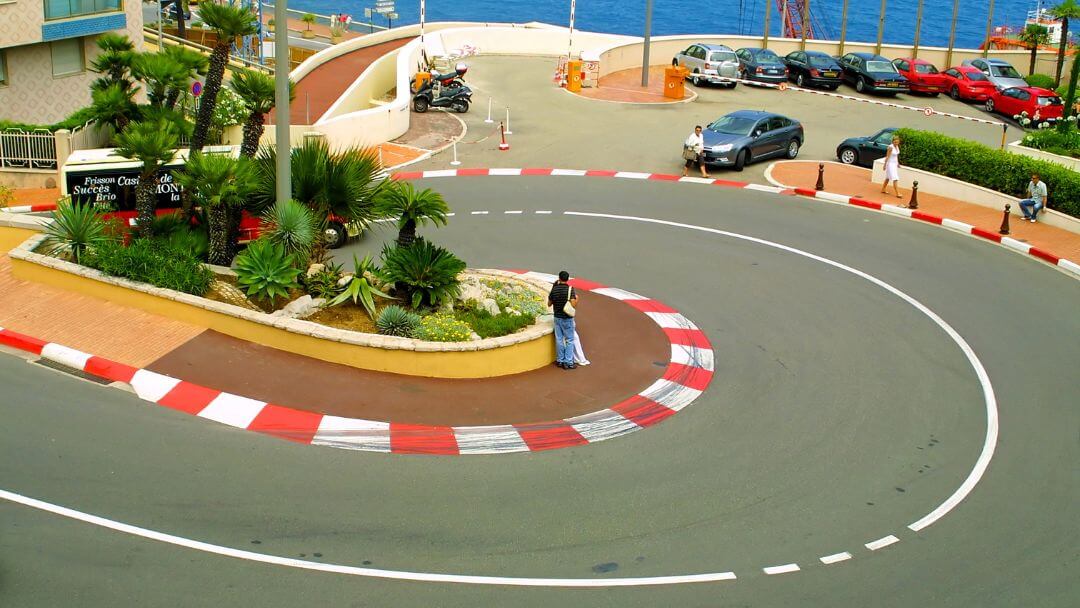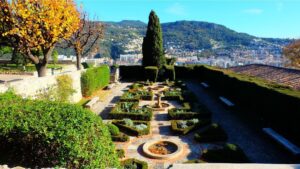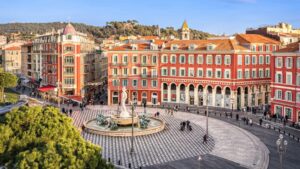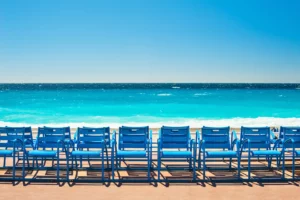Every year, enthusiasts from all over the world come to us for just one thing: to include the Grand Prix circuit in their discovery of Monaco. At Tour Azur, whether you opt for a private tour or a shared tour in a small group, all our itineraries include a visit to the legendary Monaco Grand Prix circuit. This guide is designed to help you understand why this race is so fascinating… and why it’s always at the heart of our tours.
The Monaco Grand Prix, a Formula 1 legend
The birth of an exceptional race
The Monaco Grand Prix was first held in 1929 under the impetus of Automobile Club de Monaco (ACM) with the aim of promoting its international recognition. Antony Noghès, son of the ACM president, is supported by Prince Louis II of Monaco and imagined this demanding race.
Although the Monaco Grand Prix has enjoyed a certain prestige since its very first edition, it is above all over the years (and in particular after its inclusion in the integration into the Formula 1 World Championship in 1950) that it has become a not-to-be-missed motor sport event.
💡The Triple Crown refers to the feat of winning the three most prestigious events on the motor racing circuit: the Monaco Grand Prix (Formula 1), the Indianapolis 500 (IndyCar) and the 24 Hours of Le Mans (Endurance/WEC).
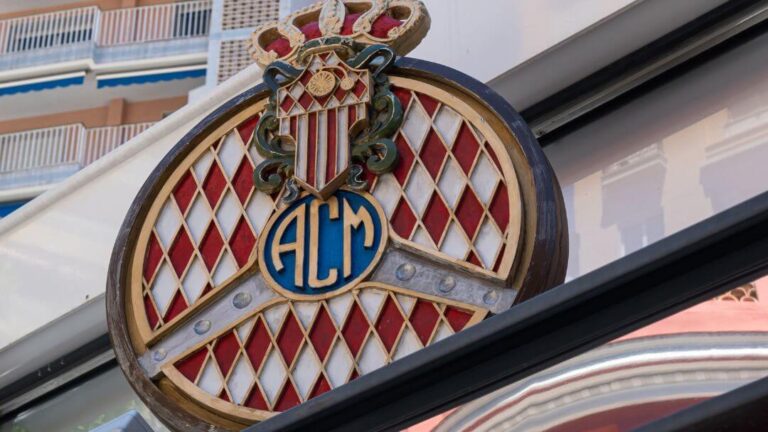
Drivers who made Grand Prix history
Monaco has always been a breeding ground for Formula 1’s greatest talents. Juan Manuel Fangio five-time world champion, shone with his mastery.
In the 1960s, Graham Hill nicknamed “Mr. Monaco”, has won five times. To date, he is the only person to have achieved the Triple Crown.
Ayrton Senna with six victories between 1987 and 1993, holds the absolute record. His surgical precision on this urban track has made him a Monte Carlo legend.
Most recently, Lewis Hamilton, Sebastian Vettel or Fernando Alonso have also triumphed in the principality’s narrow streets.
Monaco Grand Prix highlights
Here are the top 5 highlights of the GP:
Spectacular accident at the start (1950) A wave thrown up by the sea made the track slippery. Several drivers crashed on the first lap, causing an impressive pile-up.
The Senna-Mansell duel (1992) In the final laps, Ayrton Senna pulled off a defensive masterpiece to hold off Nigel Mansell, who came back like an arrow after an unscheduled stop. A confrontation that remains one of the greatest duels in the history of Monaco.
Daniel Ricciardo’s feat (2018) Daniel Ricciardo: a victim of engine power losses from a third of the way through the race, Ricciardo pulled off a real tour de force by retaining the lead right to the finish, thanks to his meticulous driving and impeccable strategy.
The Sergio Pérez crash (2024) Right from the start, a collision involving Sergio Pérez, Kevin Magnussen and Nico Hülkenberg destroyed several cars and led to a red flag, completely changing the race scenario.
Charles Leclerc’s victory (2024) By finally winning on the streets of his home town, Charles Leclerc became the first Monegasque to win the Monaco Grand Prix. A highly symbolic victory, hailed by the entire Principality.
Turning the city into a racetrack
An extraordinary urban transformation
Every year, Monaco is transformed to welcome the race. Setting up the circuit requires more than two months of work and a further three weeks for dismantling.
The Monaco circuit is the tightest on the Formula 1 calendar, with virtually no traditional virtually no traditional clearance. like those found on other circuits (gravel pits, large asphalt areas, escape routes). Rails line the track almost everywhere.
There are a few micro-arrangements to allow cars to pull out or marshals to intervene quickly, but the use of cranes is typical of Monaco: they are installed at several strategic points to quickly evacuate a car without neutralizing the entire race.
We can also count on the 700 volunteer stewards of the Automobile Club de Monaco (ACM).
Dates and full event program
The Monaco Grand Prix occupies a special place in the Formula 1 calendar. Held in May, usually two weeks after Imola, it is one of the highlights of the season. The 2025 edition will take place from May 23 to 25, and will be organized around four days.
Thursday, May 22
Formula 3, Formula 2 and Porsche Mobil 1 Supercup tests
Friday May 23rd
- Qualifying for Formula 2, Formula 3 and Porsche Mobil 1 Supercup
- Formula 1 free practice sessions,
Saturday, May 24th
- Sprint race for Formula 2 and Formula 3
- Formula 1 free practice
- Formula 1 qualifying
Sunday, May 25
- Formula 2, Formula 3 and Porsche Mobil 1 Supercup races
- Formula 1 race (78 laps or 120 minutes max.)
- F1 drivers parade
- Tour of honor of the Prince and Princess of Monaco
The technical challenges of the Monaco circuit
A narrow urban layout in the heart of Monte Carlo
The Monaco circuit is 3.337 km winds through the narrow streets of Monte-Carlo and La Condamine. There’s no room for error: the rails run along the edge of the track with no clearance zone, making any deviation from the course potentially eliminatory.
With its 19 bends Featuring several hairpins and chicanes, the layout puts drivers’ concentration and single-seater handling to the test. Here are some of the most famous corners:
- Sainte-Dévote:The first bend of the circuit, very narrow and uphill, is the scene of frequent clashes at the start.
- The Grand Hôtel Hairpin (or Fairmont Hairpin) is the slowest corner of the championship (around 45-50 km/h).
- Portier: The last bend before entering the tunnel marks a technical transition, with a descent and a sudden change of light.
- Bureau de Tabac is a quick left turn before entering the Piscine section.
- The Pool is a series of fast S-turns on a walkway above a pool.
- La Rascasse : this tight hairpin before the final straight requires powerful braking and good positioning, and sometimes offers a (rare) opportunity to overtake.
- Antony Noghès The last bend before the start/finish line determines the restart on the straight.
The terrain another difficulty: the route alternates between steep climbs and fast descents. The series of tight bends, light changes and lack of visibility on certain sections accentuates the technical nature of this Grand Prix.
💡From 2025, the Monaco Grand Prix will undergo a major change with the introduction of two compulsory pit stops, regardless of the weather. This measure aims to stimulate strategy and spectacle on a circuit often criticized for its lack of action.
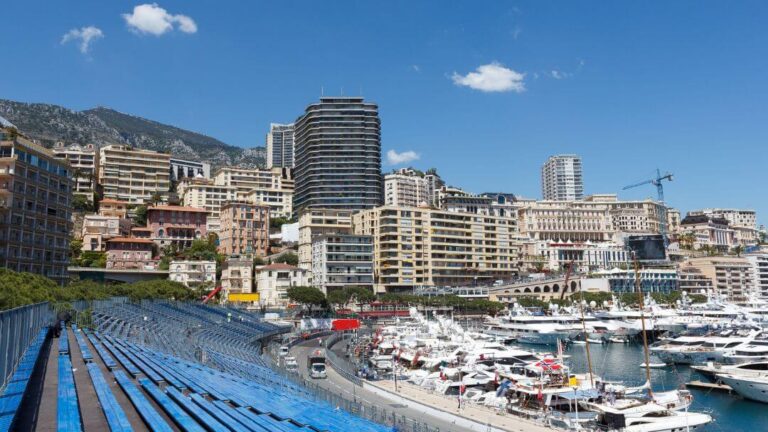
The importance of qualifications
In Monaco, good qualifying is essential: the position obtained on the starting grid very often determines the final result. It’s almost impossible to overtake in a race. Historically, the winner almost always starts from the front row.
The statistics are revealing: fewer than ten actual overtakes are generally observed during the Grand Prix. In some editions, no significant on-track overtaking was even recorded.
As a result, single-seaters are tuned to optimize performance over a single lap, sometimes to the detriment of race pace. Every tenth of a second counts!
Technical constraints for single-seaters
The Monaco circuit imposes specific technical choices on the teams, very different from those used on the other championship tracks:
- The single-seaters are configured with high-downforce front and rear wings.
- Suspension is softened to better absorb irregularities in the road surface.
- Cooling systems are adjusted as average speeds are lower.
- Some teams opt for a slightly shorter wheelbase or more responsive steering settings.
- The nose of the car can be adapted to provide better visibility.
Experience the Monaco Grand Prix
A unique atmosphere
The Monaco Grand Prix is more than just a motor race: it’s a worldly a social and cultural event in its own right. The atmosphere in the streets is electric. Every year, over 100,000 visitors flock to enjoy the experience, temporarily quintupling Monaco’s population. Bars, clubs and restaurants are packed.
Where to watch the race? Grandstands and yachts
The official stands
The Monaco circuit offers several grandstands, all equipped with giant screens, catering services and reserved seating:
- A: Avenue J.-F. Kennedy
- B: Casino
- K: Quai Albert Premier
- M: Rainier III swimming pool
- N: Panne Nord swimming pool
- O: Diving pool
- P: Panne Sud swimming pool
- T: Slipway
- V: Virage Antony Noghès
- X: Boulevard Albert Premier
There’s also the standing spectator zone V on Avenue J.-F. Kennedy, near grandstand A.
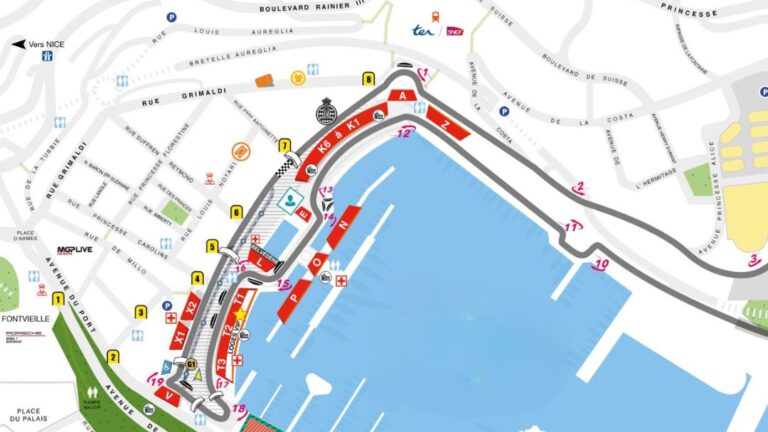
Yachts in the harbour
A symbol of Monegasque luxury, the yachts moored in the Port Hercule allow you to experience the race in unrivalled comfort. These ships offer direct proximity to the track, while benefiting from exclusive services: top-of-the-range catering, air-conditioned lounges, open bar, race-following screens and on-board after-parties.
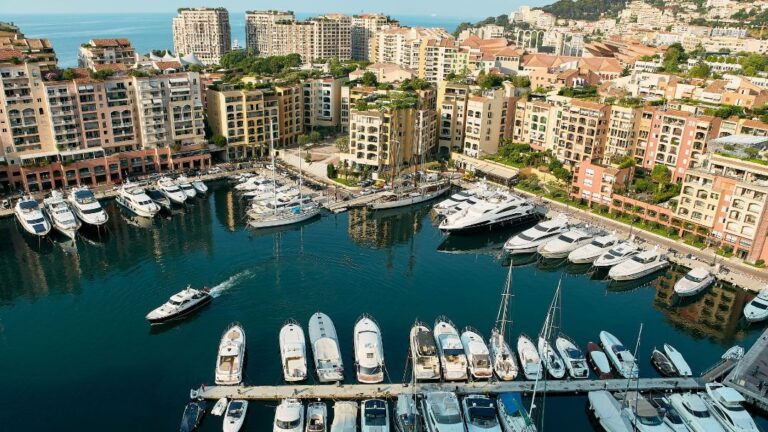
Tickets, access and VIP options
There is an official box office for the Monaco Grand Prix, managed by ACM. There are several ways to buy your tickets:
- Online, on the official website
- By post to Automobile Club de Monaco, Service Billetterie, 23 Boulevard Albert 1er, 98000 Monaco.
- On site at the ACM Official Box Office, 44 rue Grimaldi.
- At points of sale around the circuit on Grand Prix days.
As an indication, here are the projected prices for the 2025 edition:
- Thursday: €30
- Friday: €150
- Saturday: between €230 and €600
- Sunday: between €550 and €1,100
- 2-day package (Saturday + Sunday): between €765 and €1,530
- 3-day package (Friday to Sunday): between €900 and €1,665
In addition, the VIP Lodges located above Grandstand T, as well as the the Belvedere located above grandstand L, offer panoramic views of the pits, circuit and giant screens.
💡 There are also partner or authorized resellers who buy tickets from the ACM and resell them with additional services (accommodation, transport, VIP welcome….), such as F1Experiences.com, Gootickets.com or GrandPrixEvents.com.
Our tips for organizing your stay at the Grand Prix
Book your accommodation in good time
Every year, hotels and accommodation fill up months in advance, and rates can triple at the last minute.
Therefore, book at least six months before the event or even more for the most sought-after hotels. Accommodation in Monaco is still the ideal way to experience the event from the inside, but rates are very high.
💡Tour Azur tip: why not consider accommodation accommodation in one of the towns served by the TER between Ventimiglia and Nice? By arriving on foot from the station, you can avoid traffic jams and save precious time. Leaving the SNCF station, take the “Port Hercule” exit.
Access and transport to the circuit
From Nice airport
The nearest airport is Nice-Côte d’Azur, some 30 km away. From here, you can :
- Take the 110 express bus, direct to Monaco in 45 minutes.
- Opt for a private transfer (chauffeur, cab or VTC).
- Book a helicopter flight.
Trains and buses
As mentioned above, the TER train is the most practical option for avoiding traffic. You can also get to Monaco by bus:
- Line 600 operates between Menton, Monaco and Nice.
- Line 601 runs the same route at night.
- Route 602 links Nice Vauban to Monaco, Monday to Saturday only.
- Line 80 LER links Nice airport to Menton, via Monaco.
Traffic and parking
The Salines parking lot located just opposite the Jardin Exotique, offers 1,790 parking spaces. During the Grand Prix, it offers a preferential rate of €10 per day for entry between 6am and 6pm. Spectators have two options for getting to the circuit from this parking lot:
- On foot (15 minutes) via the Galerie des Salines and the Wurtemberg footbridge.
- Free shuttle service (on presentation of parking ticket), departing every 10 minutes from 8am to 8pm. It drops passengers off at the Avenue Albert II stop in Fontvieille. From there, it’s a 15-minute walk to the circuit.
Dress code: elegance and comfort
Even though the Monaco Grand Prix has no compulsory dress code, smart attire is strongly recommended.
In the VIP and paddock areas, elegance is the order of the day. Gentlemen, opt for a smart shirt or polo; ladies, summer dresses or dressy outfits. Access may be refused if attire is deemed too sloppy (flip-flops, beach shorts, etc.).
💡Temperatures generally oscillate between 18 and 26°C, but the sun can be intense. Bring sunscreen, a bottle of water and a hat.
Tour Azur invites you to discover Monaco
The Grand Prix Historique, an exceptional complementary event
The Grand Prix Historique de Monaco is a not-to-be-missed biennial event for motor sport enthusiasts. Organized by the ACM, it takes place on the same circuit as the Formula 1 Grand Prix but features classic classic racing cars.
The next edition, the 15th, is scheduled for April 24-26, 2026. During these three days, spectators can admire vehicles from the 1930s to the 1980s, divided into several series according to their era and category.
To attend this event, it is advisable to reserve tickets in advance via the official ACM website.
💡If you love classic cars, don’t miss a visit to the Monaco Automobile Museum.
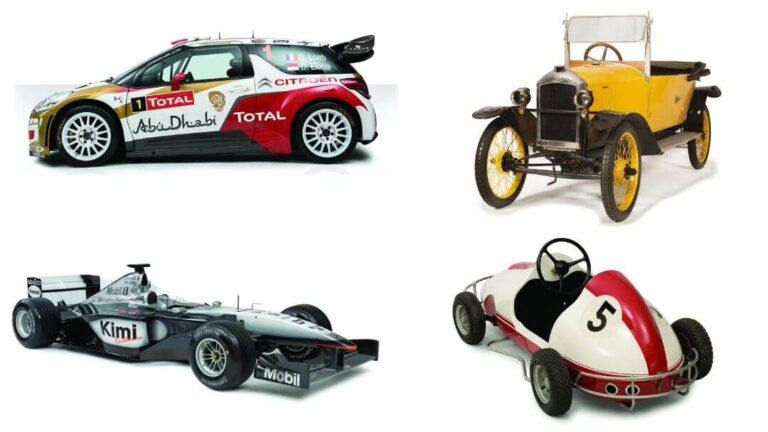
Ideas for tours around the Grand Prix
Start with a walk on the Rocher the historic heart of the city, with its cobbled streets, views of the harbour, and of course the Princely Palace.
For an overview of the city, please consult our guide “What to visit in Monaco“or our itinerary “Monaco in 1 day” perfect for optimizing your time on site.
Finally, if you’re curious about major urban planning projects, visit the new Mareterra district. Mareterra a spectacular extension to the sea.
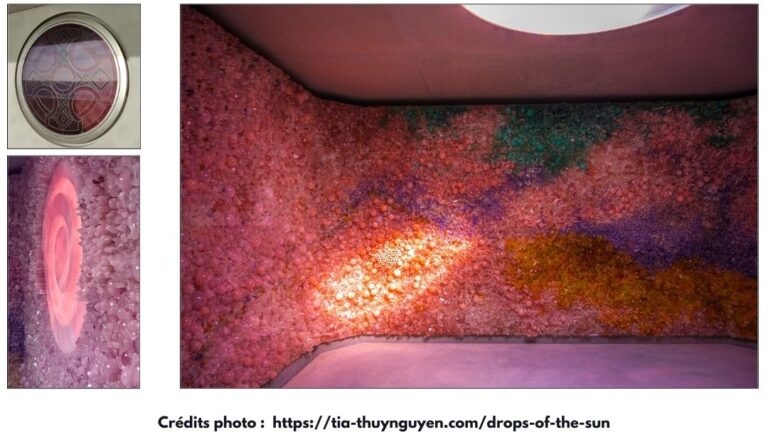
Our private and shared tours of the Grand Prix circuit
A private tour offers a personalized experience with a dedicated driver-guide. You’ll benefit from enriched commentaries at every stop, for an in-depth discovery of the area.
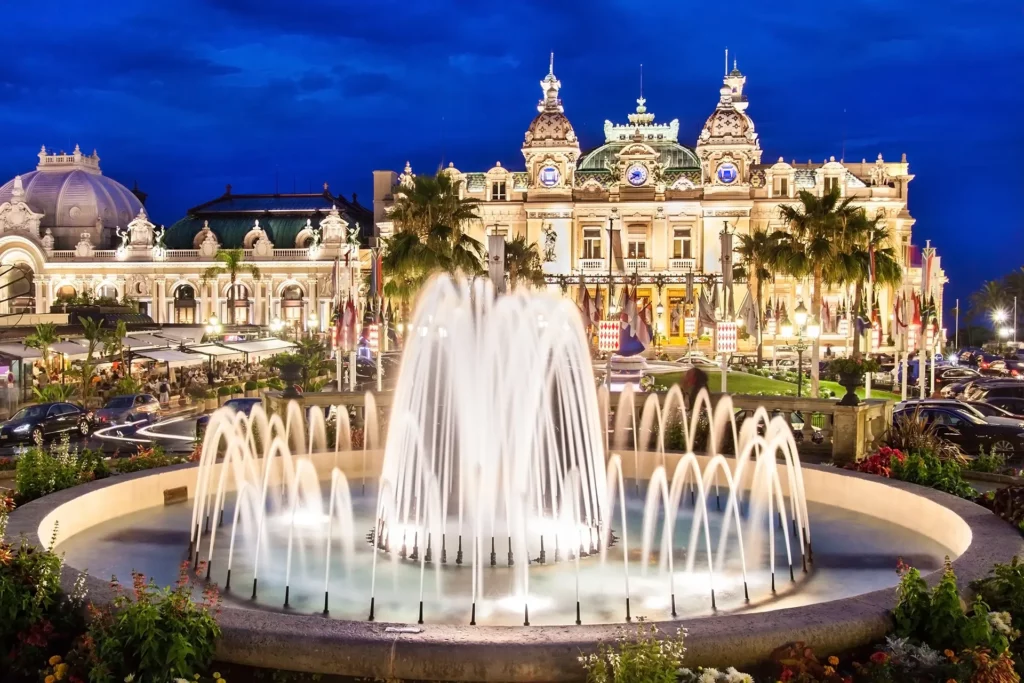
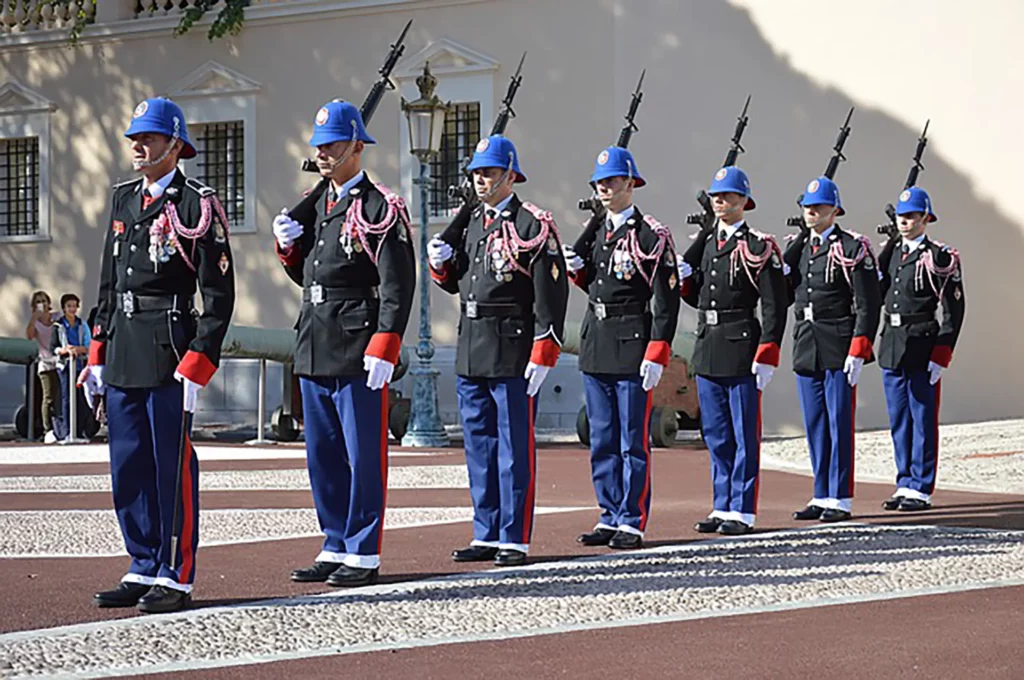
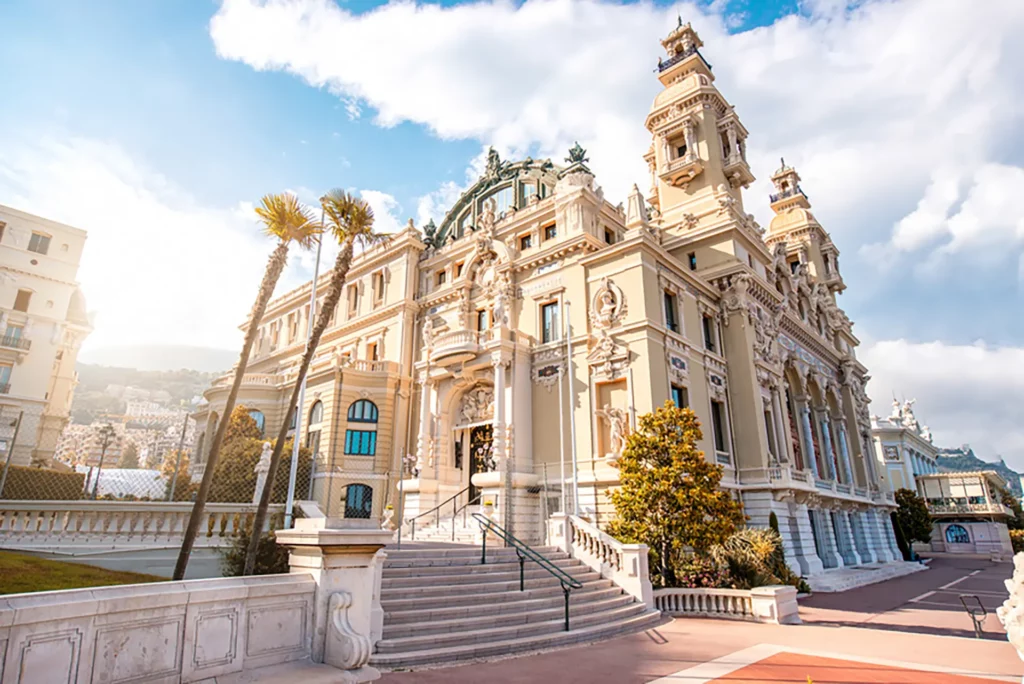
Visit the village of Eze and a perfume factory, admire the Princely Palace, the Monaco Grand Prix track and the legendary Place de Monte-Carlo.
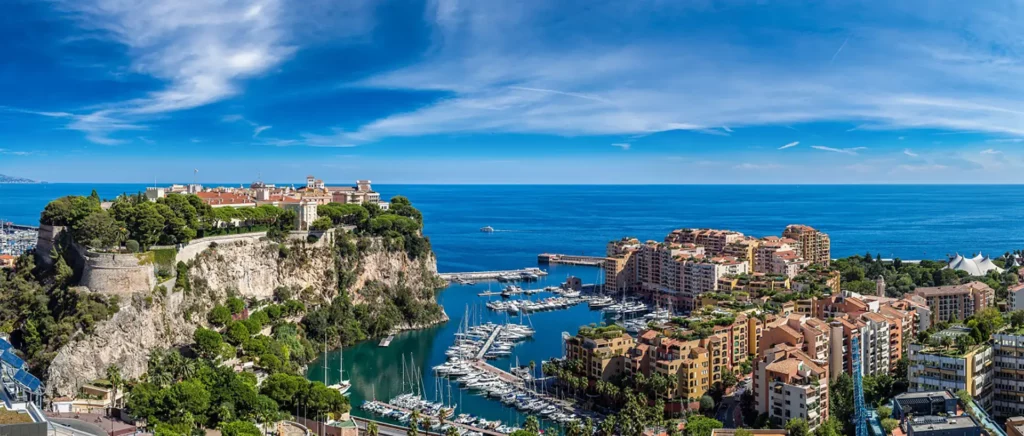
Riviera panorama
Join the village of Èze and then Monaco to discover the old town, palace and cathedral. From the Formula 1 Grand Prix circuit, contemplate Monte-Carlo. Then discover Cannes and Antibes.
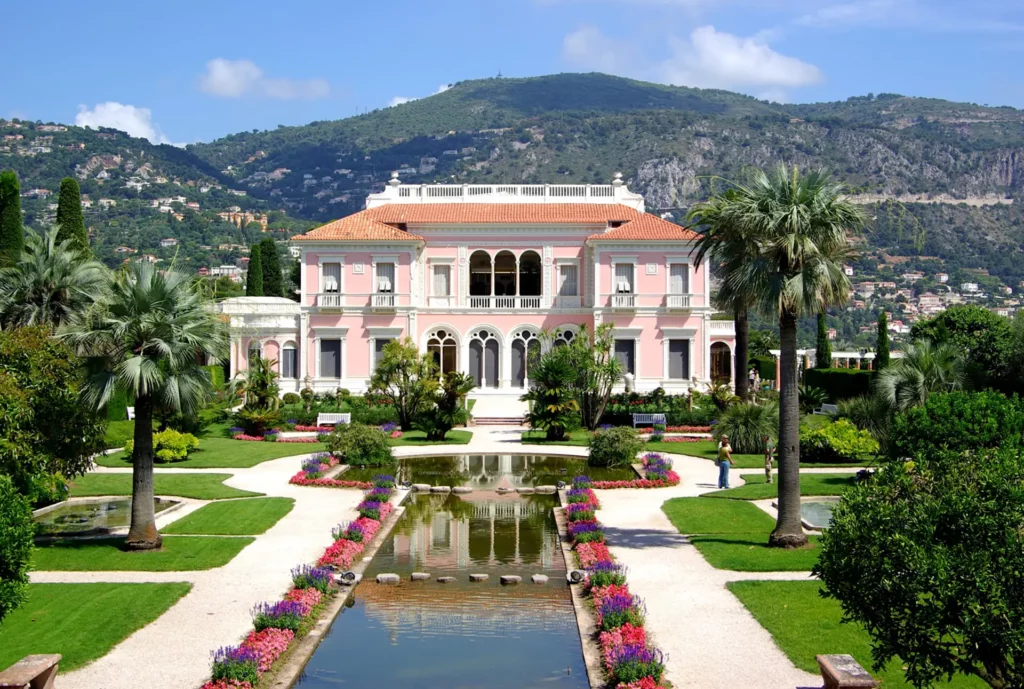
French art of living
Discover the village of Èze and the Principality of Monaco before visiting the Villa de la Baronne de Rothschild and its botanical gardens. Enjoy a gourmet break at the Baronne’s salon.
A shared tour, on the other hand, we offer small-group tours in a shared vehicle, following a fixed itinerary. The driver takes care of the journeys, but does not accompany you to the sites.
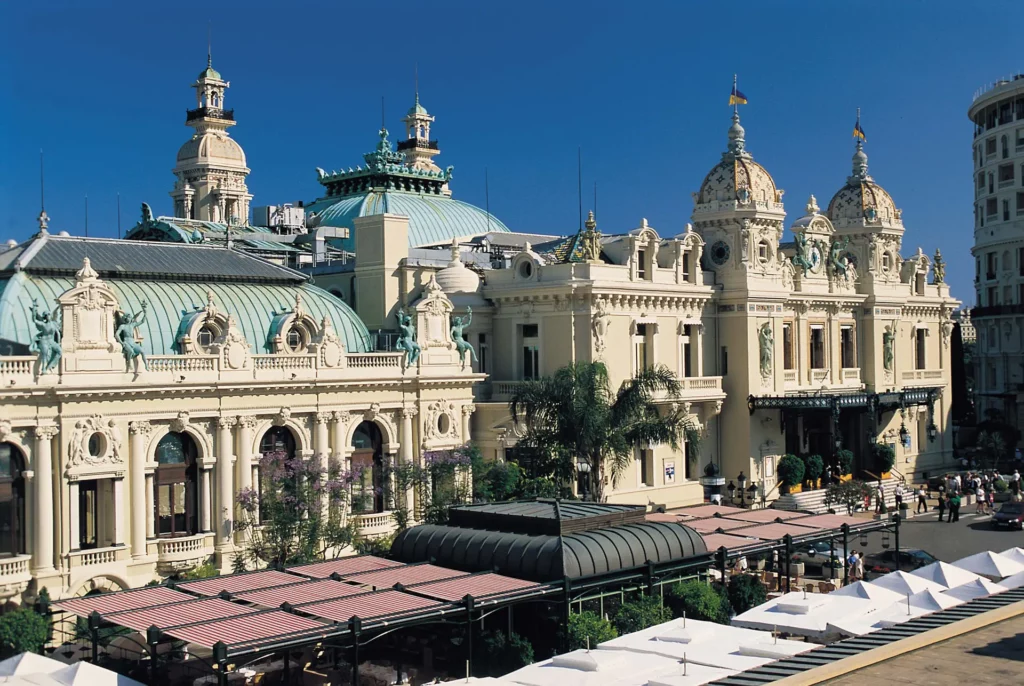
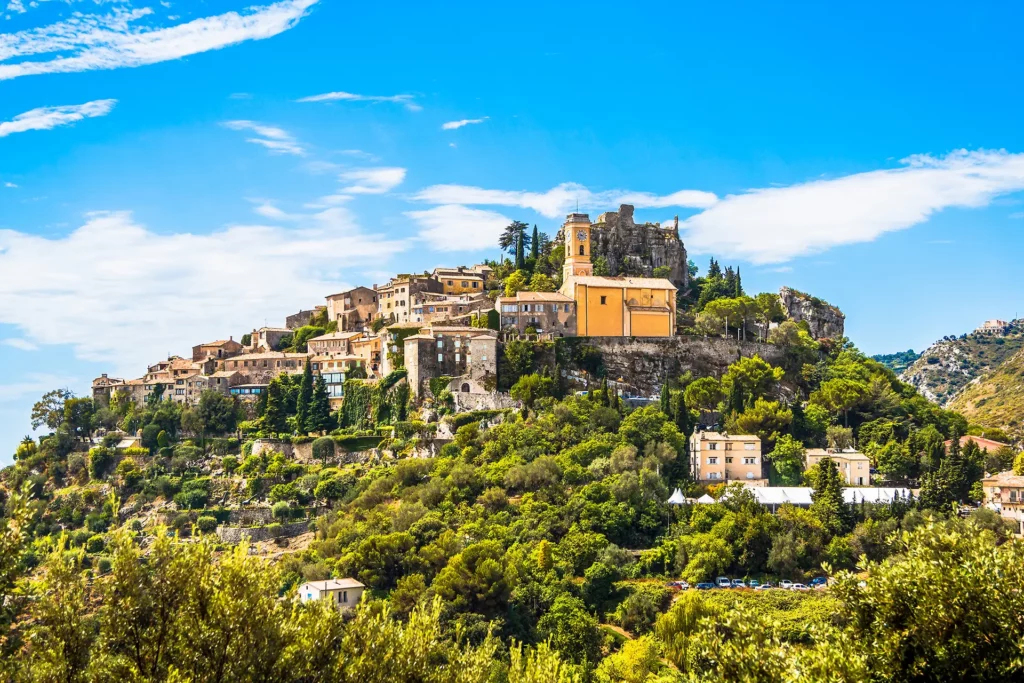
Monaco, Monte-Carlo & Eze from Nice

Riviera panorama
Join the village of Èze, then the Principality of Monaco to discover the old town, its palace and cathedral. From the Formula 1 Grand Prix circuit, drive to Monte-Carlo. Then discover Cannes and Antibes.
